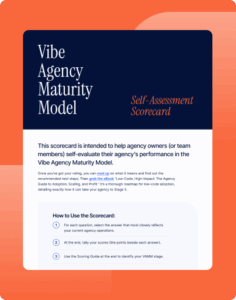Leadership is the ongoing work of refinement; a continuous cycle of learning, unlearning, adjusting, and then recommitting to doing it better the next time. Over the fourteen years I spent building and running an agency, I moved through more leadership styles than I ever expected. I found myself trying to be the hero who stepped in at the last moment, the fixer who carried all the details, the calm center who absorbed the pressure so no one else had to feel it, the friendly leader who kept the culture light, the decisive leader who pushed forward with confidence, the empowering leader who stepped back to create space, and, in certain seasons, the leader who unknowingly held far too much alone.
Each of those approaches offered its own lessons and while some created positive momentum, others added unnecessary complexity or confusion. Yet through every stage of that evolution, one principle continued to emerge as the most stabilizing, the most human, and the most consistently effective foundation for creating an environment where people could thrive, grow, and contribute fully: transparency.
While many companies treat transparency as a slogan or a line in an employee handbook, it took on a very different meaning for me. It evolved into the operating system that shaped how I communicated, how I made decisions, and how I built relationships with the people I worked with, both internally and externally. It became the grounding force beneath every project, every conversation, and every moment of internal or client-facing growth, because it supports everything else that matters in a service business: creativity, accountability, collaboration, and long-term trust.
As I continued leading teams through different seasons of growth and challenge, I began noticing a clear pattern: any time transparency was practiced with intention and consistency, three essential conditions emerged within the workplace, creating the kind of environment where people could do their best work without fear, friction, or unnecessary barriers.
Transparency builds trust
Trust is created through clarity. When people understand why decisions are made, what is expected of them, and where the team is heading; they no longer need to fill in the blanks on their own. Instead of spending energy guessing at meaning, interpreting tone, or assuming the worst, they can focus on the work itself because the context surrounding it is clear. When leaders commit to open and consistent communication, the entire dynamic shifts. Trust becomes the natural outcome, because people can move confidently when they are not navigating uncertainty in the dark.
Transparency creates safety
Psychological safety does not come from being unfailingly positive or overly accommodating, it comes from honesty. Teams feel safe when their leaders are willing to explain the reasoning behind decisions, acknowledge mistakes without defensiveness, welcome difficult questions, and remove the expectation that every idea must be perfect before it is shared. When transparency becomes a cultural norm, people stop protecting themselves and start participating more fully. They explore more freely, share ideas without hesitation, and take the kinds of thoughtful risks that strengthen both the work and the team itself.
Transparency strengthens connection
Connection deepens when people feel included in the broader purpose of the work, and when they understand the shared goals, constraints, and responsibilities that tie everyone together. In many agency environments, individuals often operate inside their own lanes, working intensely yet separately, which can create unintended isolation. Transparency dissolves that separation by helping everyone see how their contributions fit within the larger narrative. It builds alignment, creates momentum, and fosters a sense that the entire team is contributing to the same story rather than isolated chapters.
When trust, safety, and connection exist at the same time, creativity finally has the room it needs to breathe. Teams stop operating from a place of caution and begin approaching their work with confidence, curiosity, and a sense of shared ownership. The quality of the work improves not because people are pressured or pushed, but because the environment gives them the clarity, stability, and support they need for their best ideas to surface on their own.
Yet transparency is more than a leadership principle within a team, it can be a defining advantage. Clients can instinctively sense when something is being “softened”, withheld, or delayed. They feel the difference between clear communication and vague updates, and they can immediately tell whether a team is aligned behind the scenes or quietly struggling to hold things together. Transparency shapes not only internal culture, but also the trust and confidence a client feels throughout the relationship.
This is where the concept becomes more nuanced. Transparency is essential, but it must be practiced with intention and balance. When leaders share everything internally without structure or context, it can create unnecessary anxiety. When they share too much with customers without considering the purpose behind that information, it can weaken confidence or expose details that do not benefit the relationship. The real skill lies in offering the clarity people need while still protecting the stability of both the team and the client experience.
Through experience, I learned that transparency is most effective when it is practiced with clear boundaries, providing clarity without creating overwhelm. Balancing openness with structure allows both teams and clients to benefit from honesty while keeping focus, alignment, and confidence intact.
For leaders, this means approaching transparency as a tool rather than a free-for-all, and it can be applied with a few practical approaches.
How to practice transparency with your team:
-
Share the context, not the chaos:
Your team needs to understand the why behind decisions. They do not need to absorb your overwhelm. Focus on giving clarity, not transferring emotional weight. -
Define what is changing and what is staying steady:
Great leaders reduce ambiguity. Even during uncertainty, remind the team of what is predictable and dependable. -
Make expectations explicit:
Transparency without expectations creates confusion. Explain the goal, the timeline, and what good looks like. -
Invite input, but make the final call:
Teams appreciate being included, but they also want leadership to lead. Transparency is not a consensus. -
Model the honesty you expect:
Admit your own mistakes, explain your learning process, and demonstrate growth. It gives everyone else permission to do the same.
How to practice transparency with customers:
-
Share updates early, but keep them structured:
Clients value proactive communication. They do not need every detail, only what affects outcomes, timelines, and decisions. -
Explain reasoning as clearly as results:
Clients trust your thought process as much as your delivery. Show the logic behind your recommendations so they can follow your decisions. -
Set boundaries on what is internal versus external:
A healthy agency does not expose its internal debates, workload strains, or operational noise. Transparency is clarity, not confession. -
Anchor transparency in solutions:
Never drop a problem at a client’s feet. Present the challenge, the impact, and the plan. This builds trust rather than uncertainty. -
Be consistent:
Inconsistency destroys transparency. Set a cadence for updates and stick to it. Reliability is a form of honesty.
When practiced with intention; transparency becomes one of the most powerful tools a leader can wield, both within teams and in client relationships. It removes friction, reduces uncertainty, and creates the space for work to move forward more smoothly. It allows ideas to flourish, collaboration to deepen, and outcomes to improve because the environment invites their best thinking to emerge.
Transparency is the foundation I return to time and again because it consistently proves that when people are trusted, they rise; when they feel safe, they engage more openly; and when they feel connected, they create work that has meaning, influence, and lasting impact.
This is the kind of environment that allows teams to thrive and clients to grow alongside you, creating relationships and results that are sustained, resilient, and genuinely collaborative.





